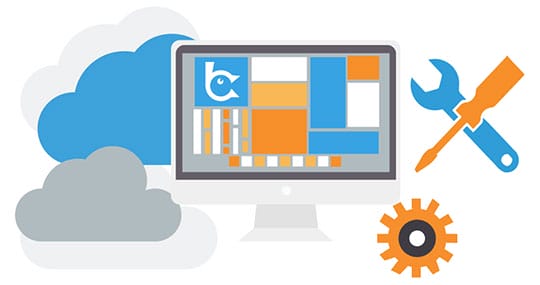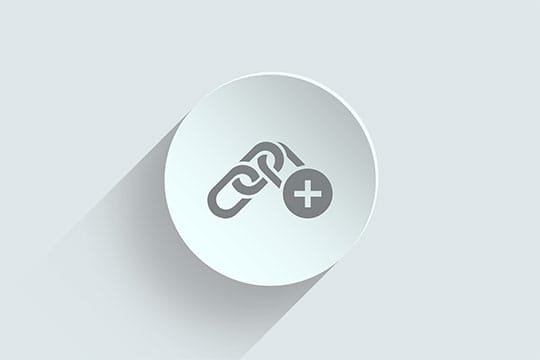A website is a collection of web pages that are accessible on the Internet. A website can also be called an online site, which you might use to refer to the same thing. Web sites can include HTML text with images and other media files, or they may consist only of text files – it depends on what the website is for.
Why website maintenance is important?

Website maintenance is an essential part of website running. When you do not maintain your website on regular basis, it may cause technical glitches someday. If you follow these simple tasks to keep your website healthy, it will be easy for you to avoid any unwanted issues with the performance of your site.
The maintenance of a website is ensuring that it is running smoothly and properly for visitors and owners of the site, so they can access what they need or want with ease and without any issues or problems. If a website is not maintained correctly, the owner might have difficulties accessing it. If you can still access your website but something on your site displays incorrectly or isn’t working properly, then this is an example of maintenance issues that need to be addressed. This could mean fixing images and text on your posts or making sure links are working properly if you’ve made any changes to the content, you have online.
Recommended for you: 10 Types of Websites You Can Build with WordPress.
Is website maintenance difficult?
Due to this being a job that requires attention at all times, many business owners hire web developers to maintain their websites for them so they don’t lose traffic during any downtime when something doesn’t work right with their website. Many social media platforms offer services that help fix common problems people run into with their websites, such as Facebook providing analytics for your Facebook page or Twitter providing analytics for your various Tweets.
However, if you are not using a social media platform to maintain your website, there are other ways to keep track of performance statistics so you can identify problems with your site before it has an influence on the amount of traffic you receive. Google Analytics is one solution that many companies use because it allows users to track their website’s metrics over time through the use of graphs and reports. The reports indicate where in the world traffic is coming from (through which websites), what type of device visitors are using to access your site (desktop, mobile, etc.), how many pages they view during each session, demographic information about who is visiting based on location and more.
Running a website can be fun and exciting. But there are several tasks you should do if you don’t want to face technical problems down the road.
1. Keep your CMS up-to-date

If there are updates available for the content management system (CMS), make sure that you update it as soon as possible. For example, if WordPress releases an update, then first apply this update to your blog and then go ahead with new tasks. These updates generally focus on fixing bugs and updating the plugins. Since new vulnerabilities might be discovered; changing themes or adding plugins may increase the chances of hacking into your site so you have to be very careful about these things.
Your website platform is an important foundation of every website because it makes everything work together. If your website runs on WordPress, for example, then updating plugins and themes should be done regularly, independent of whether they feature new functionality or not (especially if they do). Otherwise, your website might malfunction because of security issues or other bugs that were fixed in these updates.
2. Fix broken links

Broken links create a negative impression on users’ minds because generally, they assume that website is not maintained properly by the owner if any link is not working. In order to avoid such an awkward situation, you should always make sure that all your links are working fine and check them from time to time. You can use free online tools like Xenu Link Sleuth or Google Webmaster Tool’s “URL Inspection” feature to find broken links. Another best option is to use a plugin for WordPress which will automatically look for broken links and remove them from the source code. If you own a WordPress site then WP No External Links Plugin can help you with this task easily. For sites other than WordPress, Broken Link Checker can be an ideal alternative.
Broken links look unprofessional and make visitors leave your website quickly. They also harm search engine optimization. If you want to impress website visitors and search engines alike, fix broken links on your website immediately.
3. Eliminate links to unsafe domains

There are some website domains that should never be linked to because they could harm website visitors and the reputation of your website (and business) in a heartbeat: malware-laden sites, phishing sites, and spammy website forums come to mind. It’s probably best not link out at all but there is no risk of any harm if you do it right. For example, don’t add such pages as external links but embed them using code (read this article for more information).
4. Boost readability

Readable content is one of the most important elements in terms of website performance and website design and usability. If your website features unreadable content, it is not only a website maintenance nightmare but also a website ranking and search engine visibility issue. You can boost readability by avoiding complicated website terms and phrases, by writing for website visitors first and search engines later (this means avoiding keyword stuffing), and by carefully balancing between website design and readability.
5. Banish misspellings

Misspellings might seem like they do not affect website performance at all but they do if you no longer want to be seen as an amateur. Misspelled words show that you don’t pay enough attention to detail, which affects the overall impression people have of your business/website/products or services. Moreover, there are millions of people online who are trying to search for website solutions but misspell website terms. Because of this, website maintenance is not just about keeping your website error-free but also keeping it in the search results when people misspell website keywords.
You may like: Surprising Expenses When Running a Website!
6. Make full website backups

Backing up entire website data is one of the important things that every single webmaster or blogger should focus on because it can be really painful if something goes wrong with your site’s database. There are plugins available for WordPress users like UpdraftPlus and All-in-One WP Migration which make backups automatically without any kind of human intervention required.
You might think that website backups are only important if you want to switch hosting providers or launch a website redesign project. But website backups are helpful in other ways too: they protect you from malware infections, security breaches and lead to faster website load times, which positively affects SEO rankings. If you don’t have a proper backup system in place yet, make sure you test your current solution by restoring your website from scratch. Also, consider using WordPress plugins for making regular website backups because they can come in handy (again) when website redesign is due and you want to keep some website design elements intact.
7. Freshen up your website content

If website visitors haven’t visited your website for a while, they might begin to think that it was abandoned or that no new website content has been added since the last time they were here (which lowers website trustworthiness and credibility). This is why it’s important to add fresh website content on a regular basis: simply by adding new articles, blog posts, and pages. They can be of any length and any subject but they should always reflect the latest trends in your industry and contain keywords that people would search for online.
8. Check for SEO roadblocks

Some website maintenance tasks have more of an impact on website rankings than others. For example, website redirects might seem like minor website maintenance tasks but they can affect your website performance in a big way because search engines rank websites higher/lower based on their history (which means that website redirects are very important). Other things you should pay attention to include website 404 errors, the use of website canonicals, and website URL structure.
9. Speed up your website

Website load speed is one of the most important factors when it comes to SEO and website usability (because visitors will leave whether they were able to find what they came for or not). This is why it’s absolutely vital to optimize website images, create website sitemaps that leverage browser caching. If you need help with website speed optimization, consider website speed testing tools.
10. Test your website forms

Last but not least, website forms are important for collecting website leads, email marketing campaigns, and/or online transactions. This is why it’s recommended to regularly test each website contact form you have by sending an autoresponder message after visitors submit their messages. No matter what website maintenance checklist you decide to follow, always make sure that your website contact forms work properly because they can be extremely valuable assets when used correctly.
You may also like: A Guide to Building a Great Website for Your Law Firm.
Conclusion

Even though website maintenance is often associated with technical issues (e.g., security, server downtime), it has much more to do with the overall website performance and the way website visitors perceive your business/products or services. This is why website maintenance tasks often overlap with website usability, website design, and website speed optimization. Keep this in mind when creating a website maintenance checklist because you might be able to boost your SEO rankings by properly implementing some website changes.
This article is written by Khurshid Alam. Khurshid is the founder of Pixel Street, a web design company. He aspires to solve business problems by communicating effectively digitally. In his leisure, he reads, writes, and occasionally plays a game of table tennis.
 This article is written by Khurshid Alam. Khurshid is the founder of
This article is written by Khurshid Alam. Khurshid is the founder of 




